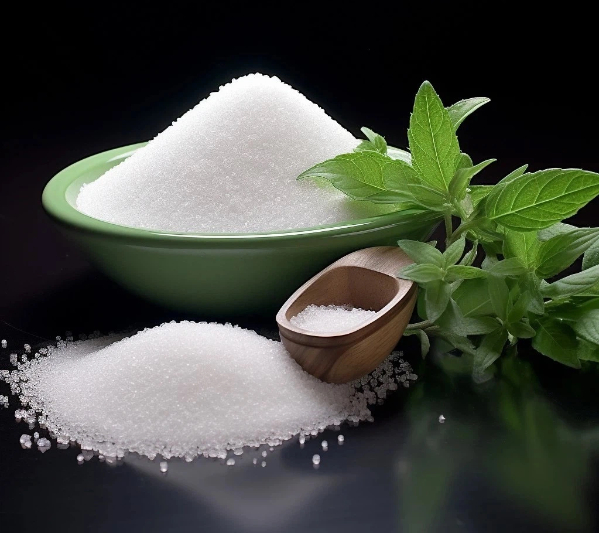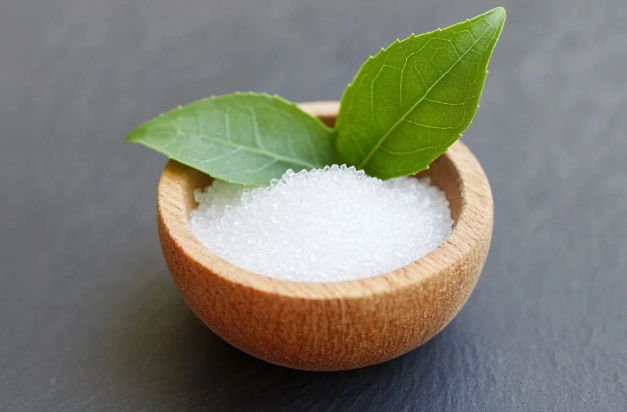Views: 222 Author: Sara Publish Time: 2025-10-24 Origin: Site








Content Menu
● What Stevia Is and How It Works
● Regulatory and Safety Landscape
● Health and nutrition implications
● Applications across product categories
● Formulation strategies and blending
● Quality, sourcing, and production considerations
● Consumer and market considerations
● Commercial and regulatory strategy
● Sustainability and environmental considerations
● Case studies and practical takeaways
● FAQ
>> 1. What is Stevia and why is it considered a good sugar alternative?
>> 2. How does Stevia affect taste and how can the aftertaste be mitigated?
>> 3. In which product categories is Stevia most effectively used?
>> 4. What are the regulatory considerations when using Stevia in global markets?
>> 5. How should a manufacturing program approach Stevia formulation?
In a world increasingly tasked with reducing added sugars while maintaining palatability and consumer acceptance, natural sweeteners have taken center stage. Among them, Stevia, derived from the leaves of Stevia rebaudiana, stands out for its high-intensity sweetness, minimal calorie contribution, and broad regulatory acceptance in many markets. For manufacturers serving the food, beverage, and healthcare sectors, Stevia offers compelling advantages—especially when paired with functional polyols and dietary fibers to craft blends that improve taste, mouthfeel, and texture without sacrificing nutritional goals. This article delves into what Stevia is, its health and regulatory landscape, practical applications across product categories, formulation strategies, and a pragmatic view of where Stevia fits within a broader sweetener portfolio. The discussion emphasizes Stevia as a legitimate sugar alternative that can support clean-label ambitions, cost considerations, and scalable production while acknowledging its sensory nuances and regional regulatory variations. Throughout, Stevia remains a central thread in the narrative, reflecting its evolving role in modern nutrition science and commercial food technology.

Stevia is a non-nutritive, zero- or very low-calorie sweetener extracted from the Stevia rebaudiana plant. The primary sweet-tasting constituents are steviol glycosides, with rebaudioside A (Reb A) and stevioside being the most studied and widely used, though dozens of glycosides exist in varying proportions depending on the plant source and processing method. In practice, Stevia compounds are orders of magnitude sweeter than sucrose, requiring careful formulation to avoid bitter aftertastes and to achieve sugar-like sweetness profiles. For manufacturing teams, this means:
- Ingredient form options: whole stevia leaf extracts, purified steviol glycoside blends, or standardized Reb A-rich fractions suitable for beverage, baked goods, dairy, and clinical nutrition products.
- Taste optimization: blending Stevia with other natural sweeteners or polyols can help mask aftertastes and balance sweetness over a wide temperature range, from cold beverages to baked textures.
- Stability considerations: Stevia-based sweetness is stable under typical processing conditions but can interact with pH, metal ions, and heat differently across product systems, necessitating pilot-scale testing.
Regulatory status for Stevia and its extracts varies by jurisdiction, influencing labeling, allowable use levels, and consumer perception. In major markets, steviol glycosides have received approvals that support their use in foods and beverages, with established acceptable daily intake (ADI) guidelines. Manufacturers should stay current with regional regulations, including any updates to labeling requirements, permissible uses in dietary supplements or medical nutrition products, and potential restrictions in certain high-intensity applications. A robust regulatory strategy includes:
- Verifying permitted uses and maximum level limits for Stevia extracts in each product category (beverage, dairy, baked goods, etc.).
- Ensuring clear labeling that reflects the source sweeteners (e.g., steviol glycosides) and any blends with other sweeteners or bulking agents.
- Monitoring post-market safety data and consumer feedback related to off-notes or aftertaste that can influence product acceptance.
Stevia contributes minimal calories and has negligible impact on blood glucose in typical use amounts, making it an attractive option for individuals managing caloric intake or glycemic response. Key considerations include:
- Calorie and glycemic impact: Stevia does not raise blood glucose in most consumers and does not contribute calories in standard use levels, supporting weight management and metabolic health goals.
- Potential benefits: By replacing sugar with Stevia-containing formulations, products can help reduce overall energy intake and added sugar consumption, potentially lowering risk factors associated with obesity and type 2 diabetes when used as part of a balanced diet.
- Safety and tolerability: For most adults, Stevia is well tolerated; some individuals may experience mild gastrointestinal symptoms or taste-related sensitivity. Long-term safety data in diverse populations generally support its use within established ADI levels.
Stevia's versatility makes it suitable for a wide range of products, but formulation challenges and sensory profiles vary by category. Practical guidelines and considerations include:
- Beverages: Stevia is widely used in carbonated soft drinks, ready-to-drink teas, dairy beverages, and fortified waters. Blending Reb A-rich steviol glycosides with other sweeteners or flavor modifiers can improve mouthfeel and reduce aftertaste, especially in sparkling platforms.
- Baked goods: In cookies, cakes, and bread, Stevia-only systems may require bulking agents (e.g., sugar alcohols or natural fibers) and moisture retention strategies to mimic sugar's functional roles in texture and browning.
- Dairy and dairy alternatives: Stevia can replace sugar in yogurts, milk-based beverages, and plant-based milks, often combined with polyols or natural fibers to maintain creaminess and body without crystallization or gritty textures.
- Confectionery and snacks: Hard candies, gummies, and chocolate analogs can incorporate Stevia blends to achieve high sweetness with controlled bitterness and to manage melt behavior and mouthfeel.
- Medical nutrition and pharmaceutical uses: Stevia blends can support sugar reduction in oral dosage forms, nutrition shakes, and enteral products where calorie control and glycemic considerations are critical.
A practical approach to deploying Stevia in commercial products involves careful formulation and, often, blending with other sweeteners to balance sweetness intensity, aftertaste, and functional properties:
- Sweetener blends: Common strategies pair Stevia with polyols (e.g., erythritol, xylitol) or with natural non-caloric sweeteners (e.g., monk fruit) to expand flavor profiles and texture. Such blends can reduce aftertaste, provide mouthfeel similarity to sugar, and improve browning in baking.
- Taste-masking and aftertaste reduction: Enhancers such as vanilla, lemon, or fruit flavors can help minimize perceived bitterness or licorice-like notes. Altering formulation ratios across pH ranges and processing temperatures can further refine taste.
- Texture and mouthfeel: Sugar contributes bulk, moisture retention, and crystallization behavior. When using Stevia, compensating with fibers or bulking agents can help mimic sugar's functional roles in structuring products and in controlling moisture migration.

For manufacturers, the quality and consistency of Stevia extracts influence product performance and regulatory compliance:
- Sourcing and purification: The purity of steviol glycosides, especially Reb A, Reb D, and Reb X, impacts sweetness intensity and taste profile. A consistent supply chain and supplier quality assurances support batch-to-batch uniformity.
- Stability and compatibility: Stevia's performance can be affected by heat and pH in processing. Conducting stability studies over product shelf-life and under expected storage conditions is essential.
- Labeling and clean-label trends: Many consumers prefer clean-label formulations. Transparent labeling that communicates "natural sweetener from Stevia leaves" can align with consumer expectations if supported by accurate regulatory claims.
Consumer acceptance of Stevia-based products is shaped by taste preferences, perceived health benefits, and trust in natural ingredients. Companies should balance taste, health messaging, and accessibility:
- Taste expectations: While Stevia offers intense sweetness with zero calories, variations in perception exist, including aftertastes described by some as bitter or licorice-like. Product developers address this through blends, flavor systems, and processing optimization.
- Health storytelling: Emphasizing calorie reduction, glycemic management, and natural origin can resonate with health-conscious consumers, while being careful not to overstate benefits beyond the evidence.
- Regional preferences: Market response to Stevia blends can differ by region due to culinary traditions, beverage formats, and regulatory environment. Region-specific formulation approaches may yield better consumer acceptance.
A robust business plan for Stevia-based products includes:
- Product portfolio planning: Develop a mix of Stevia-based products across categories to diversify risk and capitalize on clean-label trends.
- Cost and supply chain management: Compare total formulation costs, including the cost of bulking agents or blending sweeteners, and manage supplier relationships to ensure stable pricing and supply.
- Regulatory diligence: Establish a regulatory playbook for each target market, including permitted uses, labeling requirements, and any restrictions tied to the body of evidence used to support health claims.
Sustainability considerations may influence supplier selection and consumer perception:
- Agricultural practices: Sourcing Stevia from farms employing sustainable cultivation practices can align with corporate social responsibility goals.
- Processing efficiency: Optimization of extraction and purification methods to reduce energy and solvent use contributes to a more sustainable supply chain.
While product successes vary by formulation and market, several practical lessons emerge:
- Start with a clear sweetness target: Define the sugar-equivalence or sweetness level relative to the product's baseline and adjust with Blends as needed.
- Pilot-scale testing is essential: Small-scale trials help identify sensory challenges early (e.g., aftertaste, mouthfeel, stability) before large-scale production.
- Leverage regulatory-aligned labeling: Where possible, highlight natural origin and zero-calorie attributes to support marketing claims without overpromising benefits.
Stevia offers a credible, science-backed path to reducing added sugars in foods, beverages, and healthcare products while supporting calorie-conscious consumer goals. By combining Stevia's high-intensity sweetness with well-chosen blends of polyols, fibers, and flavor modifiers, manufacturers can create products that satisfy taste expectations, maintain functional performance, and align with clean-label trends. The most successful implementations rely on rigorous formulation work, regionally aware regulatory planning, and a strategic mix of product formats that showcase Stevia's strengths while mitigating its sensory challenges. For companies seeking a natural, scalable solution to cut sugar without compromising quality, Stevia remains a leading option in the modern sweetener landscape.

Stevia is a natural sweetener derived from Stevia rebaudiana leaves, containing steviol glycosides that provide intense sweetness with minimal or zero calories, making it a favorable option for reducing added sugars in foods and drinks.[1][9]
Stevia can have bitter or licorice-like aftertastes at high concentrations; blending with polyols or other natural sweeteners and using flavor masking strategies can help achieve a sugar-like profile.[2][1]
Beverages, dairy and dairy alternatives, baked goods, confections, and medical nutrition products are common categories where Stevia blends support reduced sugar content while maintaining palatability.[11][1]
Regulatory statuses vary by region but commonly allow steviol glycosides with defined usage levels and labeling requirements; compliance with regional ADI guidelines and labeling claims is essential.[1][11]
Begin with a target sweetness relative to sugar, select a suitable Stevia extract (e.g., Reb A-rich), plan blends with polyols or other natural sweeteners, run pilot tests for flavor and stability, and design regulatory-aware labeling.[9][1]
[1](https://www.webmd.com/food-recipes/what-is-stevia)
[2](https://www.cleanprogram.com/blogs/health-lifestyle/sweetener-stevia-alternatives)
[3](https://www.foodandnutritionjournal.org/volume13number1/the-battle-of-natural-sweeteners-a-comprehensive-guide-to-monk-fruit-and-stevia/)
[4](https://www.zindagistevia.com/blogs/blog/the-ultimate-guide-to-stevia-sugar-and-other-zero-calorie-natural-sweeteners)
[5](https://ific.org/resources/articles/everything-you-need-to-know-about-stevia-sweeteners/)
[6](https://www.greenjeeva.com/blog/stevia-a-guide-to-the-best-sugar-alternative)
[7](https://www.youtube.com/watch?v=ayiSRT4x0p4)
[8](https://www.whatsugar.com/stevia)
[9](https://pmc.ncbi.nlm.nih.gov/articles/PMC4890837/)
[10](https://www.uclahealth.org/news/article/guide-sugar-substitutes)
[11](https://health.clevelandclinic.org/what-is-stevia)
